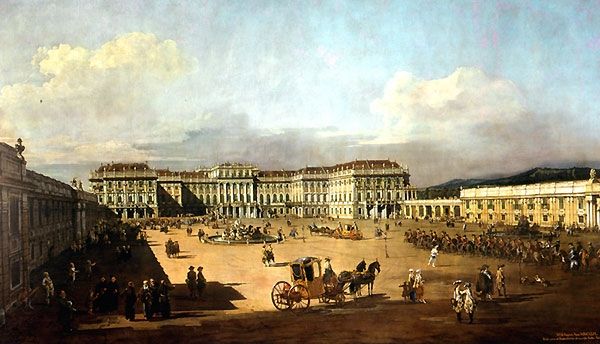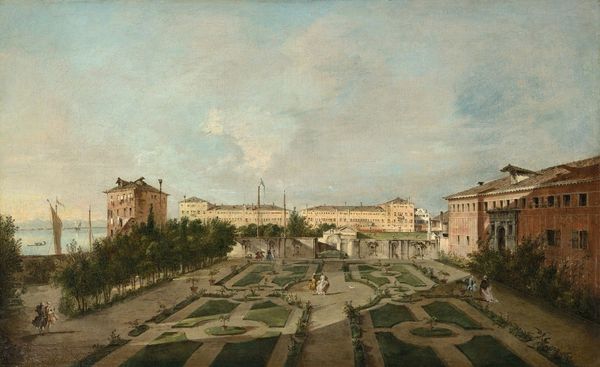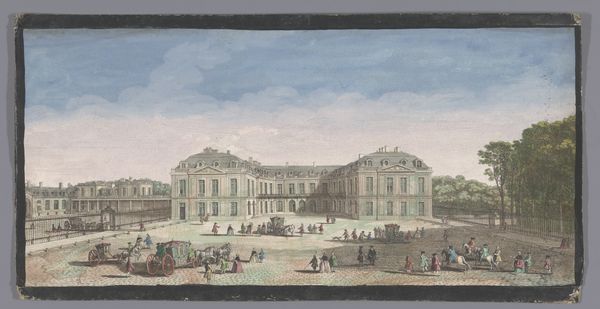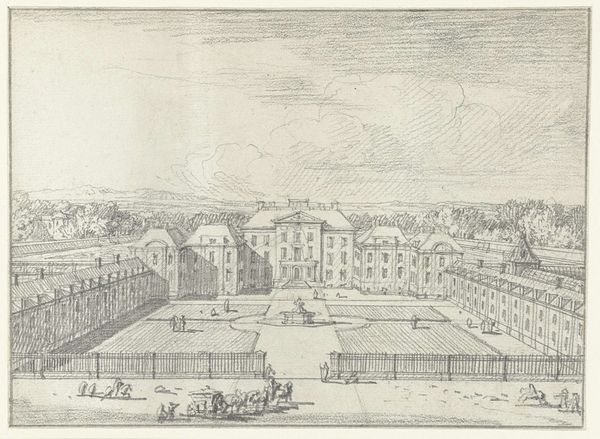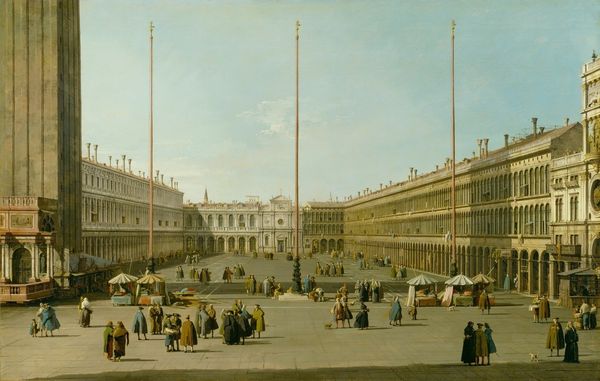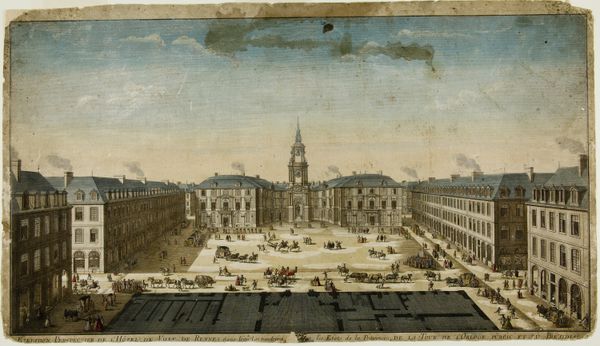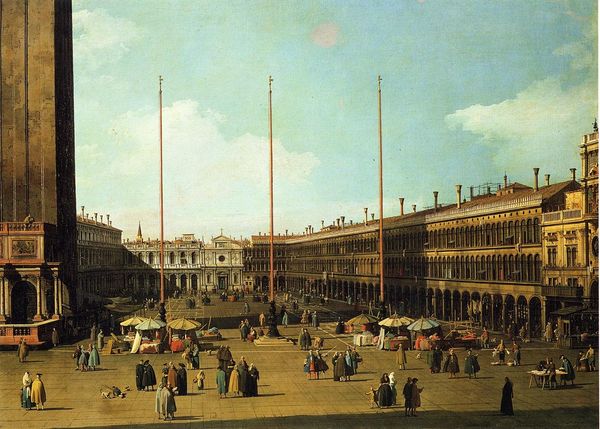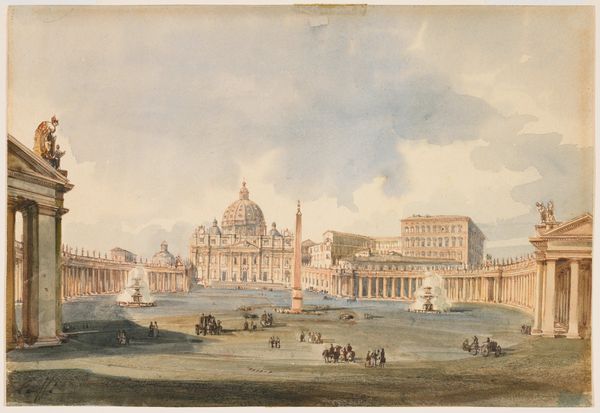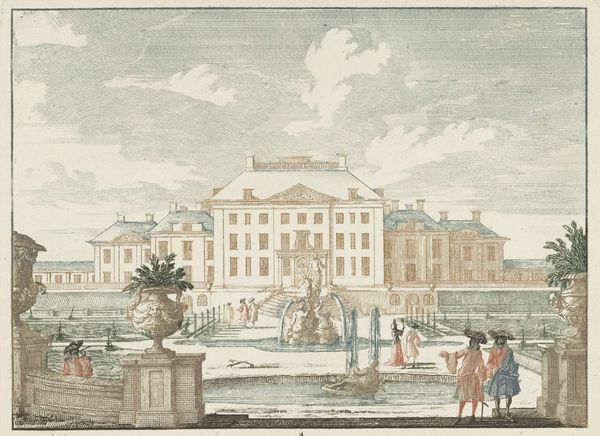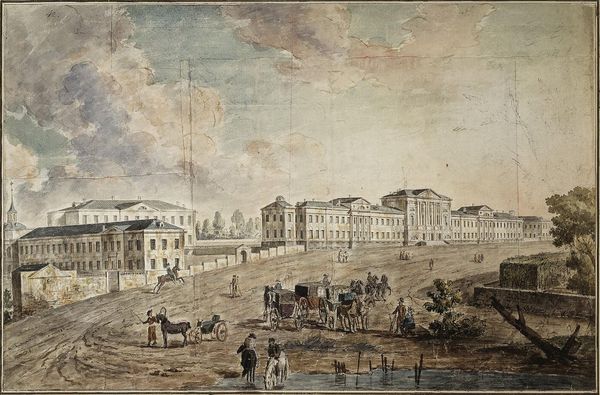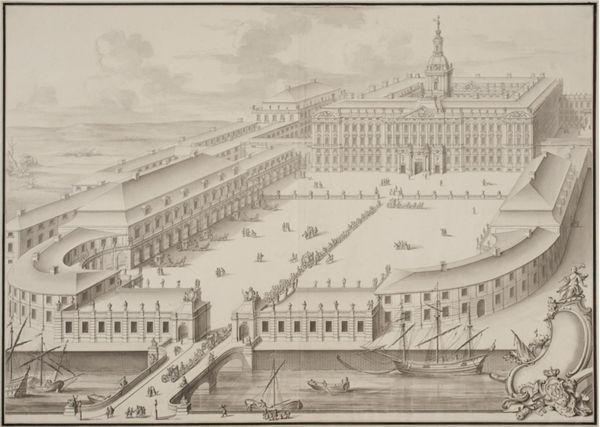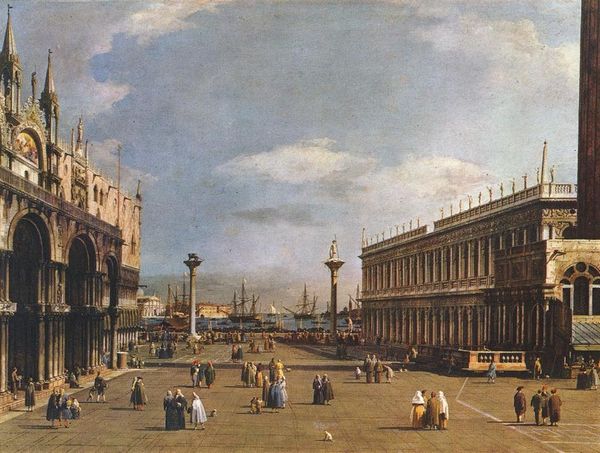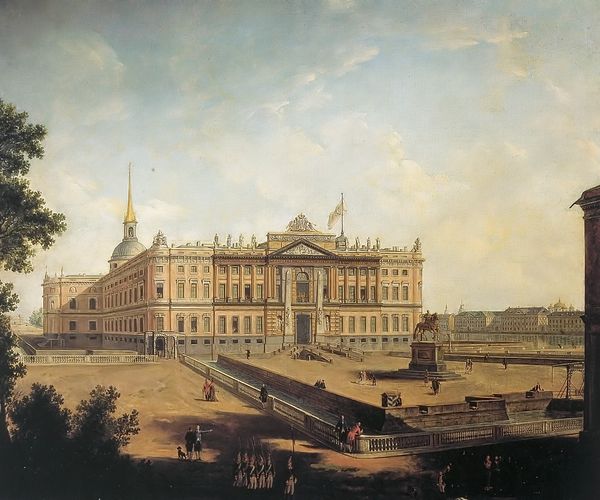
Imperial summer palace of Schönbrunn, garden façade 1758
0:00
0:00
#
garden
#
sky
#
urban landscape
#
abandoned
#
urban cityscape
#
impressionist landscape
#
possibly oil pastel
#
oil painting
#
derelict
#
city scape
#
urban art
#
park
#
watercolor
Dimensions: 135 x 235 cm
Copyright: Public domain
Curator: Gazing upon "Imperial summer palace of Schönbrunn, garden façade," painted in 1758 by Bernardo Bellotto, I'm struck by the meticulous detail and sense of orchestrated grandeur. It resides here at the Kunsthistorisches Museum in Vienna. Editor: Well, my first impression is, "wow," that is incredibly... balanced. The symmetrical garden practically sings with the perfectly centered palace. Curator: Absolutely. Bellotto was known for his topographical precision. The crisp architectural rendering serves as a detailed record, a portrait even, of the palace. He's really playing with perspective, isn’t he? Drawing your eye right to that central vanishing point. Editor: Yes, it's all about the gaze, directing our attention just so. It almost feels staged, these little figures are placed about in very regular patterns and they add to the harmony. Though, look closer and you see so much of humanity tucked inside all that formalism. They’re lively in the shadow of that great symmetrical building. Curator: Indeed. Consider the era! This painting exemplifies the Enlightenment's fascination with order and reason expressed through architectural and garden design. It is worth noting how Bellotto contrasts rigid, geometric structures of the gardens and the architectural prowess of the building with a softened sky. Editor: That's what adds that needed touch of the human. Think about it, this controlled landscape reflecting a controlled society. Yet, there's a wildness suggested by the sky and by the uncontainable behavior of light. Curator: Precisely! Bellotto's mastery lies in showcasing power through scenery, subtly commenting on the relationship between nature, architecture, and society itself. Editor: So, as we step away from this artwork, it reminds us of how buildings or landscapes can be like portraits, reflecting both the power structures and the hidden stories of the world it represents. Curator: A reminder that beauty, even when meticulously crafted, holds echoes of the natural world. And maybe it can prompt us to consider who and what is missing in those pictures of splendor.
Comments
No comments
Be the first to comment and join the conversation on the ultimate creative platform.
